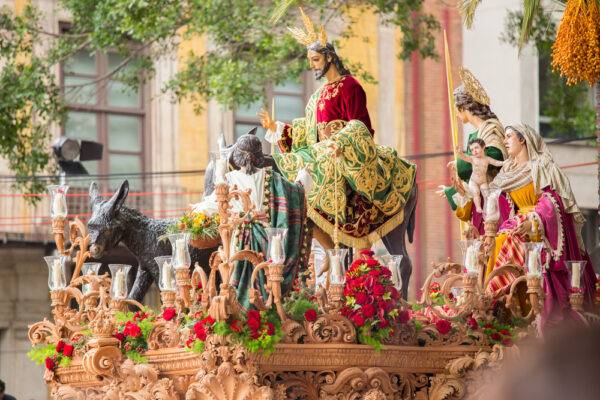Easter or Holy Week in Spain is possibly the most important festival of the year. Every village, town and city – large or small is completely transformed and locals celebrate with great fervour and passion.
The organisation of Semana Santa starts many months before the event, with local brotherhoods (cofradías) organising the floats that will slowly make their way around town during the week.
Most towns have two floats, one carrying Jesus Christ and the other carrying Mary, the mother of Jesus in mourning. Throughout the week the extremely heavy floats will be taken out of the church or cathedral and reverently carried through town by chosen members of the brotherhood, who carry them on their shoulders. In some cases – such as in Málaga – this is an all-nighter!

The style and mood of Semana Santa vary throughout Spain, from sombre and deeply religious to vibrant and passionate.
Here in Andalucía, the Semana Santa processions in Málaga and Sevilla are world-renowned as being two of the best to experience.
Also in Andalucía, you might be lucky and catch a saeta (a religious form of Flamenco). Traditionally performers will sing from balconies but you may also witness a spontaneous saeta when worshippers following the procession are overcome with the emotion of it all.
Semana Santa is a completely outdoor event in Spain and as the weather can be temperamental depending on the date, you might find yourself waiting for the procession in the rain!
Once the procession has passed the mood in the street is upbeat and families head off to enjoy tapas in a street bar or a sit-down meal with friends and neighbours.
Easter Sunday marks the last day of Semana Santa. There is a special mass and during the final procession, the Nazarenes (hooded penitents) will strip off their conical hats and face covers to celebrate the resurrection of Christ.
It’s a beautiful and passionate time here in Spain, one which everyone should experience at least once in their lifetime.


